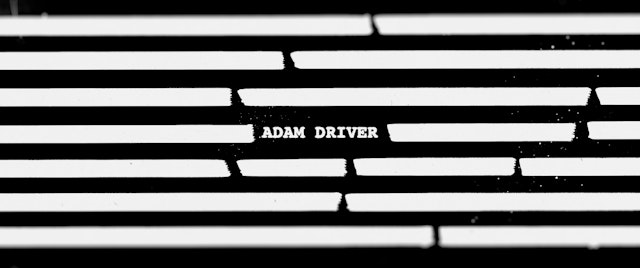
The graphics have a rough, gritty look that suggests the degraded image quality of Xeroxes, handwritten notes and other artifacts of research.
In the closing credits sequence, pieces of text in documents are redacted to isolate and reveal individual credits.




“The Report” is a new film written and directed by Scott Z. Burns (screenwriter of “Contagion,” “Side Effects,” and “The Informant!”) that tells the story behind the Senate Intelligence Committee study of the CIA’s Detention and Interrogation Program created in the aftermath of 9/11. In the film, Senate aide Daniel J. Jones (played by Adam Driver) is tasked by Senator Dianne Feinstein (Annette Bening in a Golden Globe nominated performance) to lead an investigation into the “enhanced interrogation techniques” used by the CIA against suspected terrorists at secret sites around the world. Pentagram designed the graphics for the film, including the logo, opening and closing title sequences, and a series of montages and intertitles that act as markers throughout the narrative, which ranges over a dozen years. The movie is currently in theaters and streaming on Amazon Prime.
Pentagram worked closely with Burns on the graphics for the film. “The Report” is set in a world of government bureaucracy, paper trails and dogged research, as Jones and his team spend more than five years analyzing 6.3 million pages of documents, ultimately resulting in a classified, 6,700-page review. The graphics have a rough, gritty look that suggests the degraded image quality of Xeroxes, microfiche records of paper files, handwritten notes and other artifacts of research. They also hint at the intensity of Jones’ single-minded focus, the dark nature of the subject (scenes of torture are depicted in flashbacks), and the overarching sense of paranoia as the CIA attempts to shut down the probe.
The logo reflects the compromised release of the report, which was finally made public in 2014 as a heavily redacted 525-page summary that removed any details that might lead to accountability. The logo itself censors the word “torture,” the subject of the investigation. (Making it even more meta, the design reflects a change from the film’s original title, “The Torture Report.”) The idea extends to the closing credits sequence, where pieces of text in documents are redacted to isolate and reveal individual credits.
The animated sequences employ textural layering to bring the two-dimensional documents to life, creating a sense of depth that suggests a deep dive to find the truth. The designers developed a series of montages to convey phases of intense research that serve as connective tissue between time shifts, using recreations of actual documents and a twitchy motion style that mimics the movement of a human eye scanning a computer screen. Intertitles include an animated timeline that helps viewers navigate the story as it leaps back and forth in time.
Pentagram previously collaborated with Burns on 2013 thriller “Side Effects,” creating the branding for Ablixa, a fictional drug that was central to the plot.
Office
- New York
Partner
Project team
- Todd Goldstein
- Anna Meixler
- Alex Tomlinson
Collaborators
- Nol Honig, animator
- James Isaaks, animator
